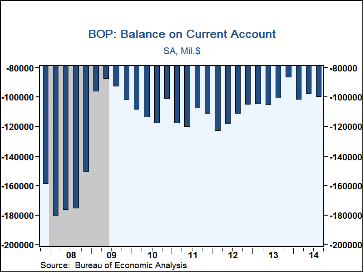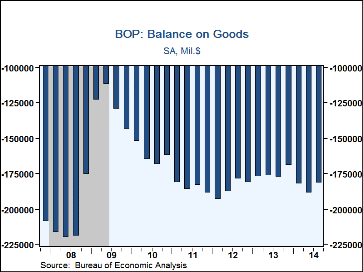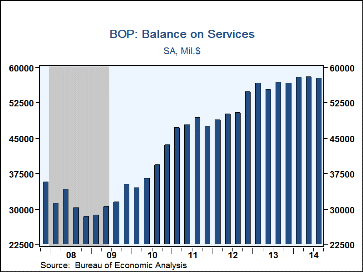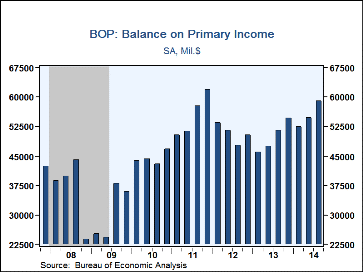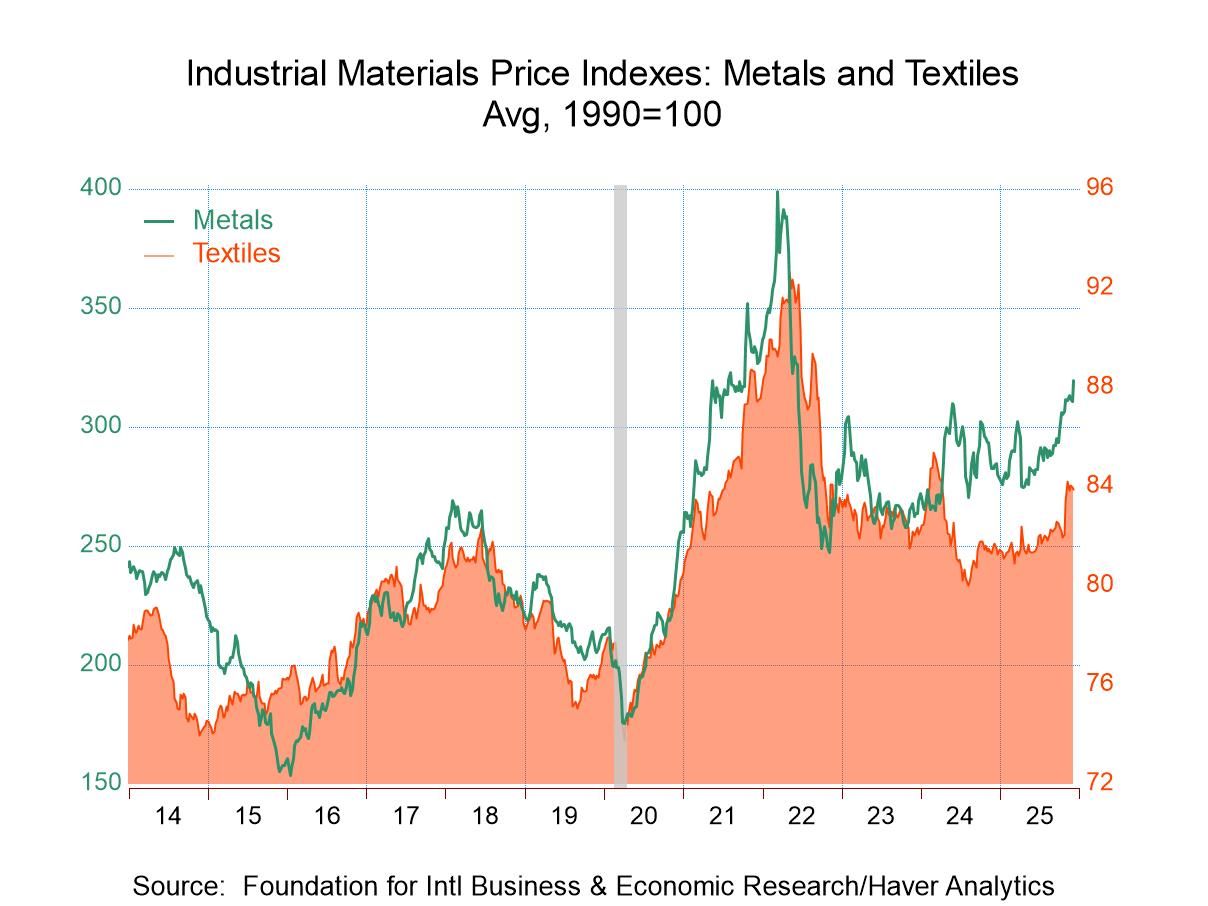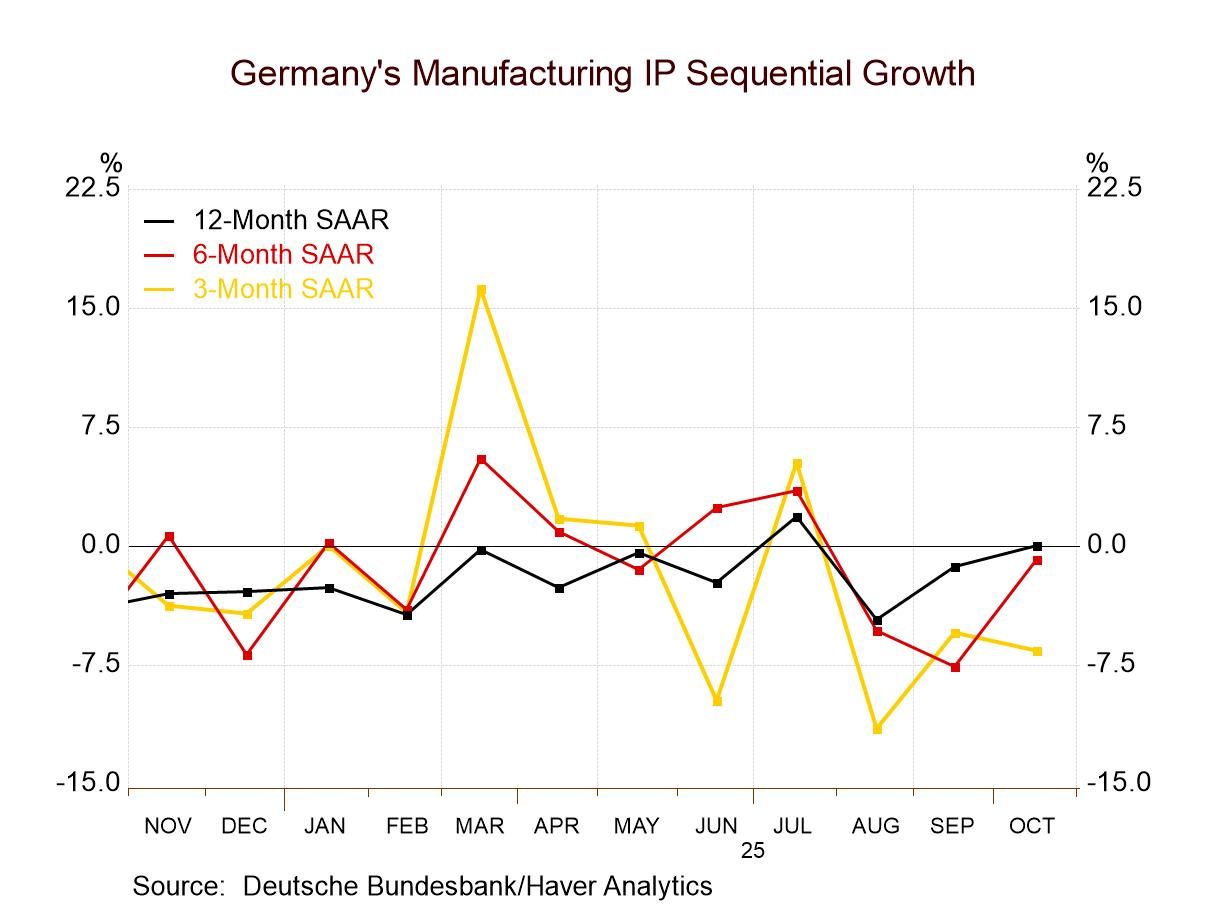 Global| Dec 17 2014
Global| Dec 17 2014U.S. Current Account Deficit Deepens Slightly
by:Tom Moeller
|in:Economy in Brief
Summary
The U.S. current account deficit deepened in Q3'14 to $100.3 billion from $98.4 billion in Q2. The deficit shrank to 2.3% of GDP from 5.8% in 2006. The Action Economics Forecast Survey called for a Q3 deficit of $95.0 billion. Exports [...]
The U.S. current account deficit deepened in Q3'14 to $100.3 billion from $98.4 billion in Q2. The deficit shrank to 2.3% of GDP from 5.8% in 2006. The Action Economics Forecast Survey called for a Q3 deficit of $95.0 billion. Exports of goods, services and income slipped 0.3% (+4.0% y/y), while imports were little-changed (3.5% y/y).
The Q3 deficit on merchandise trade shrank to $182.1 billion but remained in the range of the last two years. Goods exports rose 1.3% (4.0% y/y) and imports of goods slipped 0.3% (+3.5% y/y).
The trade surplus on services dipped to $57.7 billion but remained just off its record. Services exports were unchanged (3.0% y/y). Travel exports edged 0.5% higher (3.1% y/y) but financial services exports fell 2.6% (+6.6% y/y). Imports of services gained 0.3% (3.6% y/y), as travel imports edged up 0.3% (8.2% y/y) and financial services were little-changed (4.9% y/y).
The surplus on primary income improved to a near-record $59.0 billion as receipts from abroad grew 2.3% (6.8% y/y) and payments to foreigners ticked up just 0.3% (4.0% y/y). The trade deficit on secondary income deteriorated to $34.9 billion.
From the financial account, private direct investment abroad of $93.7 billion was accompanied by $153.4 in portfolio investments. Direct investments from abroad totaled $65.4 billion and portfolio investments were $250.9 billion.
Balance of Payments data are in Haver's USINT database, with summaries available in USECON. The expectations figure is in the AS1REPNA database.
| US Balance of Payments SA | Q3'14 | Q2'14 | Q1'14 | Y/Y | 2013 | 2012 | 2011 |
|---|---|---|---|---|---|---|---|
| Current Account Balance ($ Billion) | -100.3 | -98.4 | -102.1 | -101.3 | -400.3 | -460.8 | -459.3 |
| Deficit % of GDP | -2.3 | -2.3 | -2.4 | -2.4% | -2.4% | -2.9% | -3.0% |
| Balance on Goods ($ Billion) | -182.1 | -189.3 | -182.3 | -177.9 | -701.7 | -742.1 | -740.6 |
| Exports | 1.3% | 2.3% | -1.9% | 4.0% | 2.0% | 4.2% | 16.2% |
| Imports | -0.3% | 2.8% | 1.0% | 3.5% | -0.4% | 2.9% | 15.5% |
| Balance on Services ($ Billion) | 57.7 | 58.1 | 57.8 | 3.0 | 225.3 | 204.5 | 192.0 |
| Exports | 0.0% | 1.8% | 0.0% | 3.0% | 5.0% | 4.3% | 11.4% |
| Imports | 0.3% | 2.5% | -0.9% | 3.6% | 2.6% | 3.4% | 6.5% |
| Balance on Primary Income ($ Billion) | 59.0 | 54.8 | 52.4 | 51.5 | 199.7 | 203.0 | 221.0 |
| Balance on Secondary Income ($ Billion) | -34.9 | -22.0 | -30.0 | -31.6 | -123.5 | -126.1 | -131.7 |
Tom Moeller
AuthorMore in Author Profile »Prior to joining Haver Analytics in 2000, Mr. Moeller worked as the Economist at Chancellor Capital Management from 1985 to 1999. There, he developed comprehensive economic forecasts and interpreted economic data for equity and fixed income portfolio managers. Also at Chancellor, Mr. Moeller worked as an equity analyst and was responsible for researching and rating companies in the economically sensitive automobile and housing industries for investment in Chancellor’s equity portfolio. Prior to joining Chancellor, Mr. Moeller was an Economist at Citibank from 1979 to 1984. He also analyzed pricing behavior in the metals industry for the Council on Wage and Price Stability in Washington, D.C. In 1999, Mr. Moeller received the award for most accurate forecast from the Forecasters' Club of New York. From 1990 to 1992 he was President of the New York Association for Business Economists. Mr. Moeller earned an M.B.A. in Finance from Fordham University, where he graduated in 1987. He holds a Bachelor of Arts in Economics from George Washington University.


